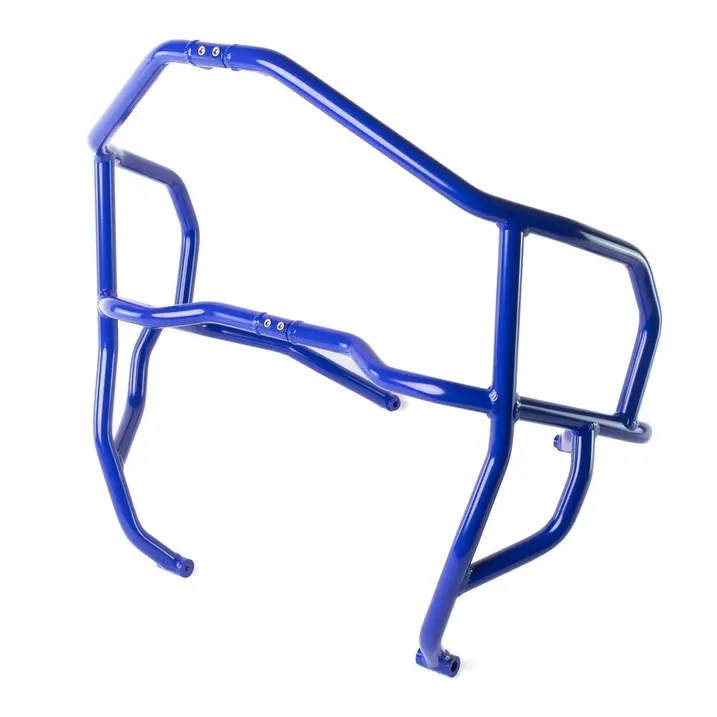Hi!
How do you take something soft, and make it hard?
I just re-read that sentence.
Let me try again.
Why would we choose a soft metal, to make a hard part, that will protect an adventure bike from damage?
That's better, if a bit less exciting.
Our product chief Jim has been working on the new hard parts for our Kove, Himi and CF Moto 450's.
He came back from our European Hard Parts factory full of ideas and prototypes.
I'll be telling you more about the luggage racks, crash bars, skid plates and nav towers for these bikes soon.
But right now, I wanted to address the elephant in the room.
Aluminium.
Loved for its light weight, corrosion resistance, and ability to bend easily.
A soft choice for a hard part?
Yes and no.
Fire creates the magic.
I'll let Jim explain.
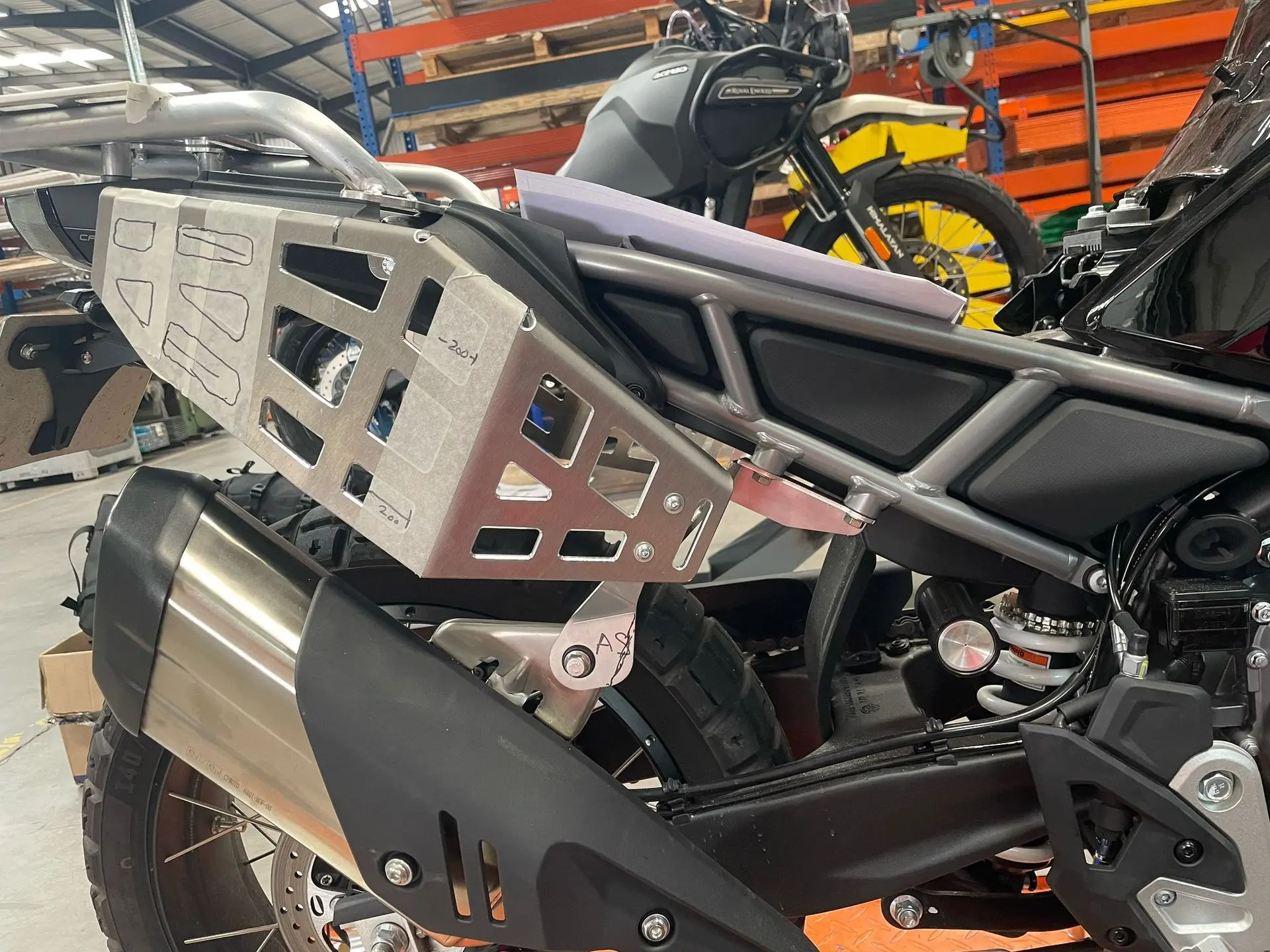
Working out hole placement on the CF Moto 450 racks.
Q: Hi Jim. It looks like theres a solid team of engineers at the factory. Who makes the magic?
A: The real starting point for everything here is with the engineers and designers who handle all the design briefs.
They are really hands-on with getting the products through production. They understand exactly how the parts need to be developed to work across all the different machines, paying close attention to things like the tolerances, the bends, the holes, and the welding. The expertise in that team is really impressive.
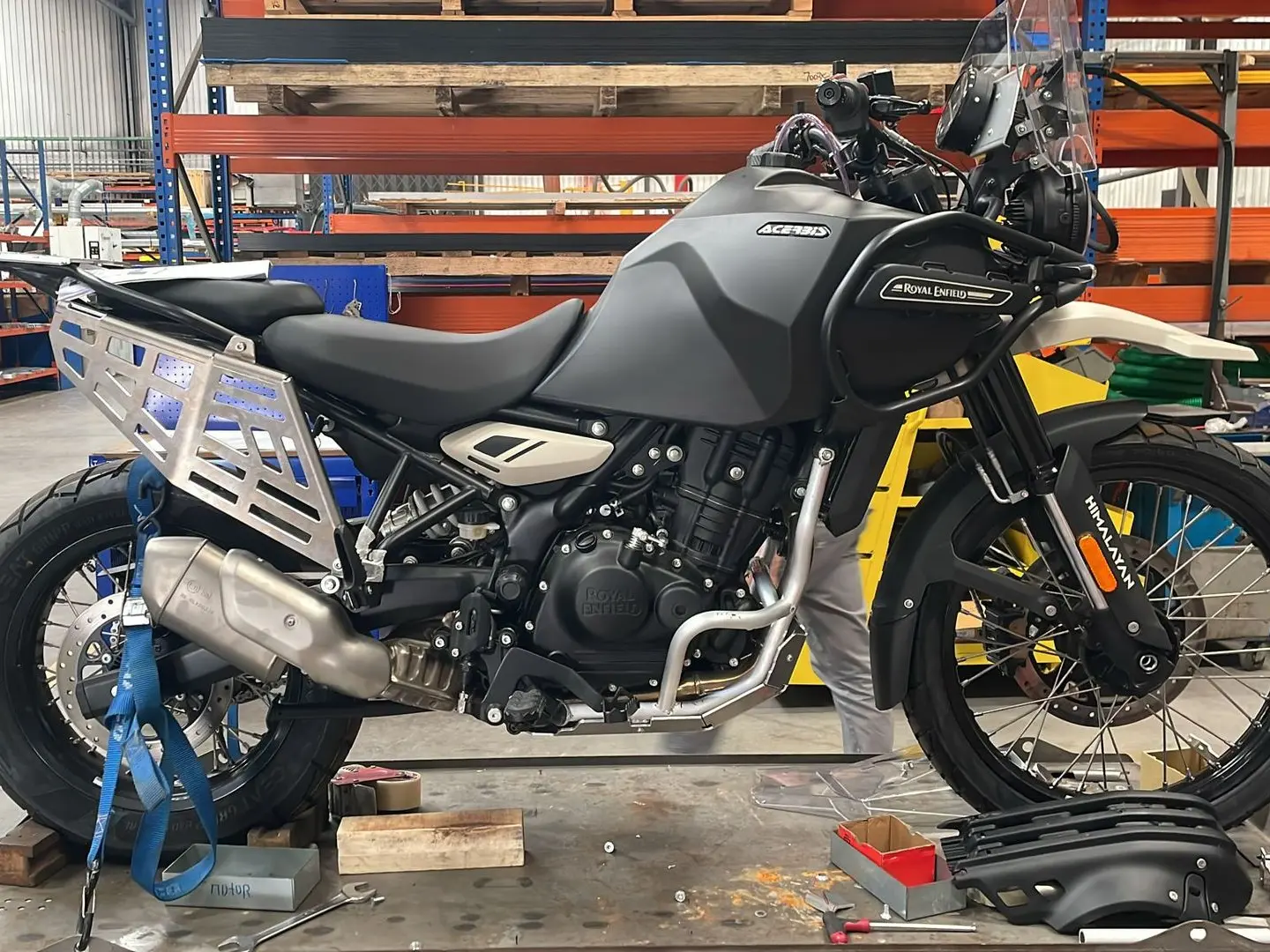
The Himi 450 hard parts start to take shape.
Q: There's a lot that goes into making our hard parts, but I wanted to focus on just one aspect. Our parts are made of aluminium which helps us keep the weight down, but occasionally we do get asked why use such a soft metal for protection?
A: The reason we can use it, despite aluminium being inherently softer, is because of a crucial step in the manufacturing process: heat treatment and hardening.
Once the aluminium crash bars are made and welded, they go into a specialised oven for heat treatment. The goal is to make the aluminium significantly harder to bend or compress.
It's that hardening process that transforms the aluminium into a much more robust material for protecting our adventure bikes.
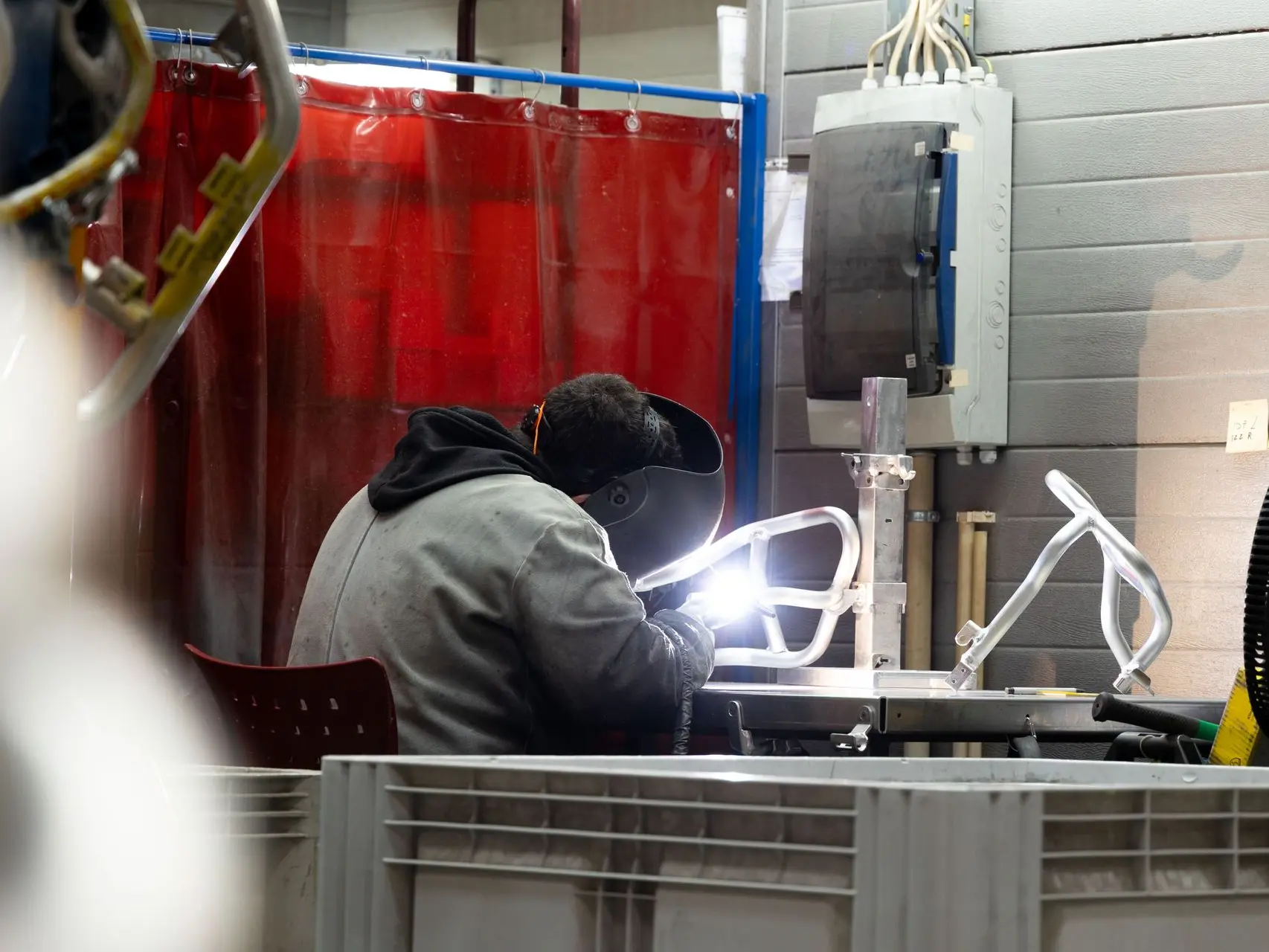
A set of crash bars are meticulously welded before hardening.
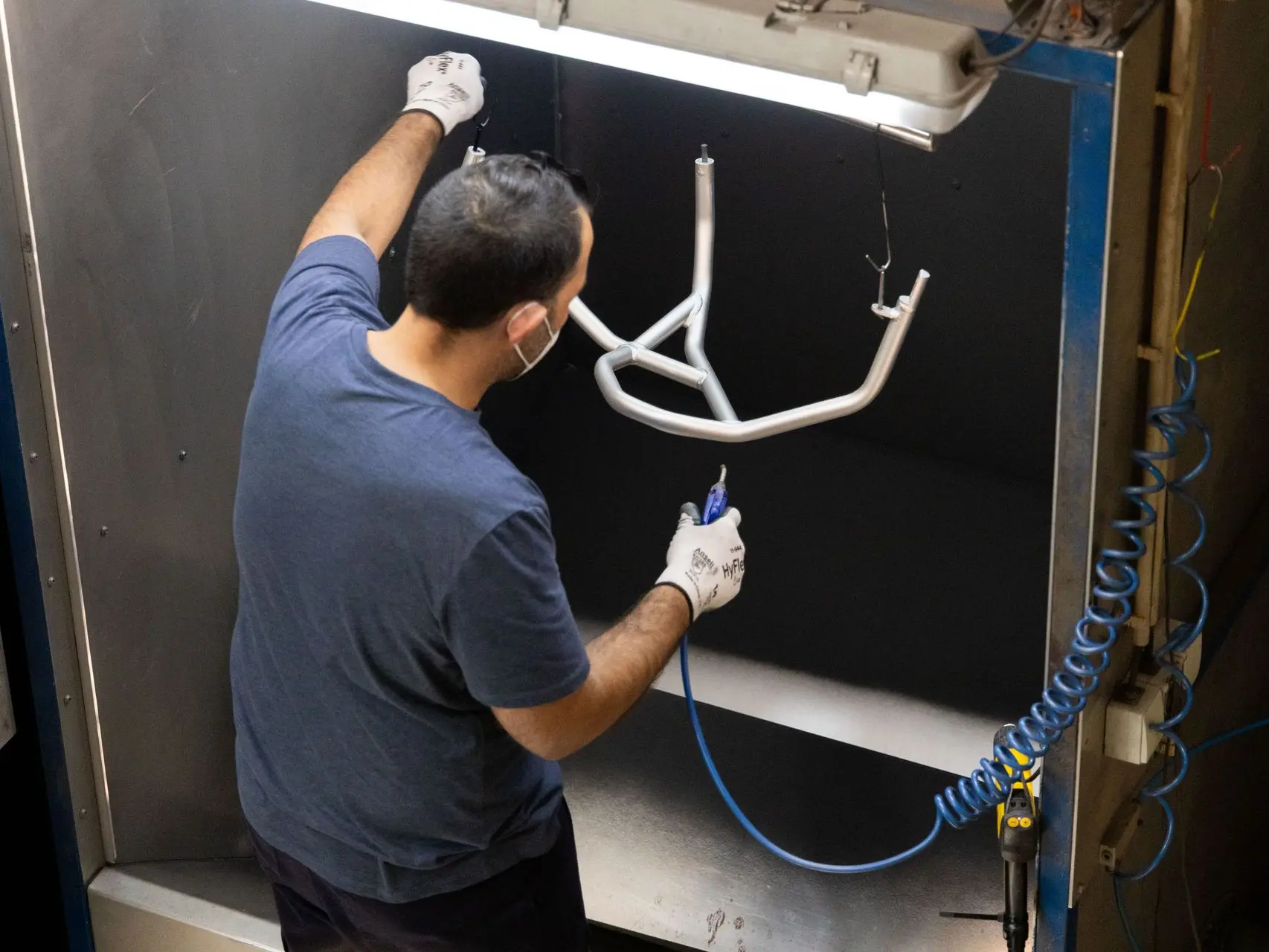
Dusting the bars ready for paint.
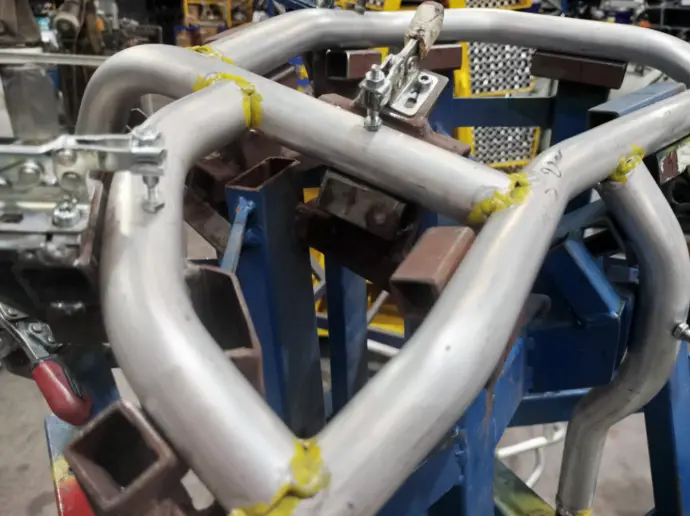
Crashbars being checked in their jig.
Q: So I guess here's the challenge, take a softer metal, make it very hard, but also be a perfect fit on the bike every time. Sounds like there's little room for error?
A: Every single component they make has a custom-made jig or tool. This jig is designed to clamp the part in exactly the right place during its construction. It essentially holds the piece in the precise shape it needs to be.
For instance, when a crash bar comes off a machine, even before it's hardened, it might still have some internal stresses or strains. The jig helps release these by holding it correctly.
Critically, before the heat treatment, every single bar is tested on one of these jigs to make sure it fits absolutely perfectly. This step is vital because, once the aluminium goes through that hardening process in the oven, you simply can't bend it anymore.
If it's not a perfect fit on the jig at that pre-hardening stage, it won't be a perfect fit on the bike. So, the jigs are instrumental in maintaining that consistent, exact fit from start to finish.
Q: And so once the aluminium is heat hardened, it acts like an unbreakable cage? Right?
A: Yes and no.
It's important to point out that the heat treatment makes our hard parts much harder than you might expect from aluminium, but ultimately, it's not indestructible, and that's intentional.
When we crash our bikes at speed, or with significant force, we actually want our crash bars to take the brunt of any impact and absorb the energy involved rather than transfer it to the frame, engine casings or plastic of the bike.
So when you see a crash bar that's scraped or dented, you really need to be asking yourself what were the forces involved, and where did they go?
If your crash bars show the crash damage, and the bike is fine, then everything is doing what it's supposed to.
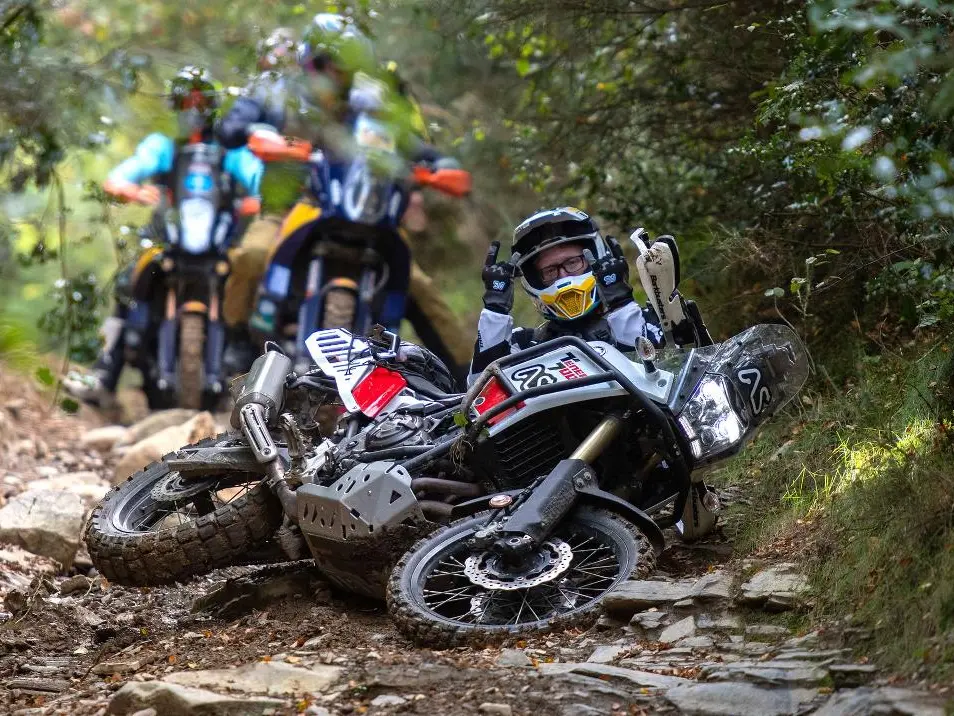
So, the next time you heave your T700 out of a ditch, dust it off and pick out the grass and mud from your crash bars, try and take a moment to think about the mountain of experience behind those skilled engineers in the factory, performing alchemy to turn that soft tube of aluminium into the hard part that's just saved your day.
Those engineers rock.
🔥
Greg Villalobos.
This story was first published in our email Newsletter. Subscribe now for the most ADV email you will get all week!
